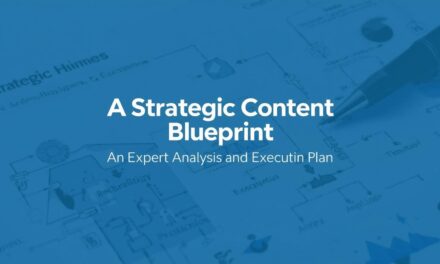Too Busy to Read? We’ve Got You.
Get this blog post’s insights delivered in a quick audio format — all in under 10 minutes.
This audio version covers: The Leverage Ceiling: Why Strategic Structuring, Not Rate Negotiation, Defines HNW Borrowing Capacity in Australia’s High-Buffer Environment (2025)
Structure First, Rate Second: The Evolution of HNW Lending in a High-Buffer Environment (2025)
Maximizing Capital Capacity in the Australian HNW Market
I. Executive Summary: The Strategic Imperative
1.1 Thesis Confirmation: Capacity Over Cost
The core challenge confronting High Net Worth (HNW) individuals and their advisory firms in the Australian lending market in 2025 is not the marginal cost of funds, but the rigid ceiling imposed on borrowing capacity. For clients seeking to finance multi-property portfolios, trust acquisitions, or business-related debt, maximizing the available capital through strategic structuring is financially and strategically superior to negotiating minor rate discounts. The current regulatory environment, specifically the sustained application of macro-prudential controls, has solidified the mandatory serviceability buffer as the primary inhibitor to desired loan capacity [Query].
Analysis of the 2025 financial landscape confirms that the 300 basis point (3.0%) mortgage serviceability buffer enforced by the Australian Prudential Regulation Authority (APRA) remains the non-negotiable constraint.[1, 2] Standard retail credit policy is fundamentally ill-equipped to assess the diverse and complex income streams common to the HNW segment, leading to systemic discounting of trust distributions and retained company earnings. This structural failure creates capacity shortfalls irrespective of substantial underlying wealth and actual cash flow [Query]. The only viable pathways to unlock required capacity involve policy hunting across three distinct segments: bespoke Private Banking services, agile Specialist Non-ADI (Non-Bank) lenders, and leveraging specific professional eligibility exemptions within major banks.[3, 4, 5]
1.3 The New Advisory Mandate: Project Management Excellence
The value proposition of the specialized financial intermediary—the mortgage broker—has fundamentally evolved. The market shifts away from pure price comparison toward project management, prioritizing the strategic alignment of credit, tax, and legal structures [Query]. The successful advisory firm must function as an integrated hub, coordinating complex documentation (trust deeds, corporate resolutions, tax returns) efficiently and minimizing the administrative load on the time-poor HNW client.[6, 7] The successful acquisition of required capital, facilitated by superior structuring, yields a return far exceeding any marginal interest rate saving.
II. The Regulatory Anchor: APRA’s 3% Buffer and the HNW Constraint
2.1 The Macro-Prudential Setting (2025 Outlook)
The stability of the HNW lending landscape in 2025 is predicated on the Australian banking regulator’s firm stance regarding prudential policy settings. APRA confirmed its decision to retain the 3.0% mortgage serviceability buffer in July 2025, resisting pressure from politicians, commentators, and elements of the banking sector to ease lending criteria . This buffer, which was raised from 2.5% during the 2021 property boom, is a non-negotiable regulatory floor intended to ensure that borrowers can continue servicing their repayments even if market interest rates rise significantly .
APRA Chair John Lonsdale cited several reasons for maintaining caution, including persistently high levels of household debt relative to income, the system’s significant exposure to residential mortgages, and the inherent risk of economic shocks arising from an uncertain geopolitical environment . The determination to retain the buffer signals APRA’s commitment to mitigating system-wide financial stability risks . Because APRA is willing to withstand political pressure and market sentiment to reduce the buffer, the constraint is structural and long-term, requiring permanent, structural workarounds rather than reliance on temporary policy relief. The buffer is thus confirmed as a persistent, inflexible fixed cost of borrowing capacity.
2.2 Quantifying the Capacity Ceiling
The operational mechanism of the serviceability buffer requires lenders to assess a borrower’s capacity using an interest rate that is the higher of a minimum floor rate (historically around 5.35% to 5.75%) or the actual contracted rate plus the 3.0% buffer . For HNW clients obtaining preferential rates—often below 5.0% in the current environment—the mandatory addition of 300 basis points results in an assessed rate significantly higher than the actual borrowing cost. This 300 basis point differential severely compresses the calculated borrowing capacity. In large-scale HNW transactions, where loan amounts frequently exceed $5 million, this calculation adjustment can reduce achievable capacity by up to a third, rendering substantial portions of the client’s desired capital unattainable.
This quantification demonstrates why marginal rate savings—e.g., 10 or 20 basis points negotiated off the actual rate—are insignificant compared to the systemic barrier presented by the non-negotiable capacity calculation. A slight reduction in interest cost is meaningless if the client cannot secure the required principal amount to execute their investment or acquisition strategy [Query].
| Metric | Actual Rate (4.50% – Price Focus) | Assessment Rate (7.50% – Capacity Focus) | Impact of Buffer |
|---|---|---|---|
| Assessed Interest Rate (Rate + 3.0% Buffer) | 4.50% (Assessed at 7.50%) | 7.50% (4.50% actual rate + 3.0% APRA buffer) [8] | +300 bps increase |
| Monthly Repayment (P&I, per $1M) | $approx $5,067$ (Actual cost) | $approx $6,993$ (Assessed cost for serviceability) | $approx 38%$ increase in assessed repayment |
| Estimated Borrowing Capacity (Assuming Fixed Surplus Income) | $C_{Actual}$ | $C_{Assessed}$ ($approx 33%$ lower than $C_{Actual}$) | Significant Capacity Reduction |
2.3 The Buffer and Non-ADI Distinction (Regulatory Arbitrage)
The rigidity of the 3.0% buffer, applied uniformly to all Authorized Deposit-taking Institutions (ADIs)—the major banks and customer-owned institutions—has created a structural pathway for alternative lenders to capture complex HNW business. Non-bank lenders (Non-ADIs) do not possess an Australian banking licence and are not directly subject to APRA’s prudential requirements regarding deposit-taking, nor are they formally bound by the 3.0% buffer mandate . This regulatory distinction creates a deliberate competitive advantage for specialist Non-ADIs (e.g., Liberty Financial ) to offer tailored lending solutions that utilize “common-sense assessments” rather than standardized credit scoring.[4, 5] By adopting flexible criteria for income assessment and potentially applying variable or lower internal stress buffers, Non-ADIs gain the capacity to serve HNW clients who are fundamentally capacity-constrained by the major banks .
III. Dissecting the Policy Traps: Income Assessment for Complex Entities
HNW financial arrangements are strategically designed for tax efficiency, wealth transfer, and asset protection. However, these very structures—specifically discretionary trusts and private companies utilizing retained earnings—create inherent conflicts with the rigid, standardized requirements of retail credit assessment, leading to policy traps that slash assessable income.
3.1 Discretionary Trusts and the Income Discount Problem
Discretionary trusts are widely used by affluent Australians due to their flexibility in income distribution, asset protection benefits, and utility in estate planning.[9, 10, 11] Because the trustee has discretion over distributions year-to-year, the income received by the individual borrower is classified as volatile or non-guaranteed. Major banks typically apply significant discounts to discretionary trust income (e.g., only counting 50% to 80% as assessable income) or require an extremely long, consistent history of distributions to the individual, often demanding two or more years of data.[12, 13] This discounting severely limits borrowing capacity even when the underlying trust shows robust, sustained profitability.
3.2 Corporate Beneficiaries and Unpaid Present Entitlements (UPEs)
A sophisticated strategy often employed by discretionary trusts involves distributing income to a corporate beneficiary, capping the tax rate on that income at the lower company tax rate.[10, 13, 14] This arrangement frequently results in an Unpaid Present Entitlement (UPE)—a debt owed by the trust to the corporate beneficiary. The existence of UPEs raises significant compliance and credit concerns for lenders, primarily relating to Division 7A of the Income Tax Assessment Act 1936, which prevents private company profits from being distributed to shareholders or associates without the payment of “top-up” tax.[13, 14] Due to this complex compliance risk, standard bank policies often exclude or heavily scrutinize UPEs and retained company earnings as assessable income for the individual borrower.[10, 14]
3.3 Self-Managed Superannuation Funds (SMSFs): Regulatory and Structural Hurdles
SMSFs provide high levels of control and flexibility over investment decisions, including property acquisition via Limited Recourse Borrowing Arrangements (LRBAs).[9, 15] However, the regulatory environment introduces substantial administrative complexity. Lenders require extensive and specific documentation to assess the viability and legality of the transaction, including certified copies of the SMSF trust deed, the custodian trust deed (for LRBAs), and the last two years of the fund’s financial reports and tax returns.[7, 15] Lenders must also perform due diligence to ensure the fund is not engaged in prohibited transactions, such as the giving of a ‘charge’ over a fund asset, or arrangements that may result in compliance risks like the application of Non-Arm’s Length Income (NALI) provisions.[16, 17]
IV. Structure First: Mitigating the Buffer’s Impact Through Policy Exception
4.1 Lender Segmentation Strategy: Matching Complexity to Policy
Capacity maximization dictates that HNW advisors must strategically segment lenders based on their risk appetite for complexity rather than merely comparing marginal interest rates. This segmentation yields three pathways for complex borrowers:
- **Retail/Standard ADIs:** Constrained by the 3.0% buffer and rigid, algorithm-driven income assessment rules.
- **Private Banking Channels:** Offer “thoughtful, bespoke lending solutions” for eligible HNW customers, typically those with lending or investments exceeding $3 million.[3, 18, 19] Private bankers are incentivized to understand the client’s “entire income structure,” including corporate compensation and foreign sources, allowing them to utilise policy exceptions that bypass retail mandates.[3, 19]
- **Specialist Non-Bank Lenders (Non-ADIs):** Offer maximal flexibility, as they are not subject to APRA’s macro-prudential standards . Non-ADIs can employ common-sense assessments, allowing for higher add-back rates for complex income sources like discretionary trust distributions .
| Complex Income Source | Major Bank (Retail Lending) | Major Bank (Private Banking) | Specialist Non-Bank Lender (Non-ADI) |
|---|---|---|---|
| Discretionary Trust Income (Non-Guaranteed) | Heavy discounting (e.g., 50-80% add-back); high volatility risk. | Full add-back via policy exception possible; requires global balance sheet review.[3, 19] | Flexible assessment pathways (e.g., specific verified business income programs) . |
| Retained Company Earnings (UPEs) | Generally excluded or subject to strict Div 7A compliant loan terms. | Assessed as part of overall wealth/liquidity; higher chance of inclusion through bespoke structure/security. | Flexible assessment pathways (e.g., specific verified business income programs).[4] |
| Serviceability Buffer Rate | Strict 3.0% mandatory add-back applied to retail rate . | May utilize bespoke floor rates or internal modeling; generally adheres to 3.0% minimum. | May use variable buffers or alternative risk pricing models independent of APRA mandate . |
4.2 Non-Collateralized Lending Structures and Asset Protection
A key structural consideration that supersedes rate negotiation is the management of security titles. Standard bank policy often defaults to cross-collateralisation, which compromises the HNW client’s long-term flexibility and asset protection strategy. Strategic structuring demands the use of standalone security arrangements wherever possible, minimizing the interdependence between assets. Lenders who accommodate greater control over individual security titles, typically through commercial or private lending divisions, offer substantial non-financial value. This flexibility and control over exit strategies represent a strategic capacity unlock that fundamentally outweighs marginal interest rate fluctuations.
4.3 Leveraging Professional Status Exemptions
The ability to leverage the borrower’s professional status provides another highly effective mechanism for mitigating prudential constraints and unlocking capacity. Lenders recognize certain elite professions (such as legal practitioners) as inherently low-risk [3, 19], allowing them to bypass standard prudential requirements.[3] For eligible professionals, benefits include “preferential credit policy and terms” and, critically, waived Lenders Mortgage Insurance (LMI) when borrowing up to 90% of the property value.[3] By waiving LMI at high LVRs, lenders provide a direct policy exception that minimizes the upfront cost while maximizing the loan principal available to the client.
4.4 Leveraging AI for Policy Hunting and Capacity Structuring
In the high-stakes environment of HNW lending, where capacity hinges on finding specific lender policy exceptions, the speed and accuracy of policy research is paramount. Modern brokerage platforms, such as **CreditPolicy** and **BrokerBuddie**, provide the technological layer necessary to execute the “Structure First” strategy efficiently.
AI-Powered Capacity Sourcing
- **Policy Engine Search:** Tools like the **AI Policy Engine** (CreditPolicy) or specialized AI Assistants (e.g., **PrivateBuddie**, **SMSFBuddie** in BrokerBuddie) allow brokers to search complex lending criteria using natural language. This accelerates the identification of capacity-unlocking policies (e.g., which lender allows a higher add-back rate for discretionary trust income).
- **Targeted Expertise:** The structure of tools like BrokerBuddie, which includes assistants like **CommBuddie** for commercial policy and **ComplianceBuddie** for document checklists, ensures the structural integrity of complex deals (e.g., Div 7A compliance checks), minimizing application rejection risk.
V. The New Value Proposition: Project Management and Advisory Integration
5.1 The Broker as the Centralized Advisory Hub
HNW clients are frequently “time-poor individuals” whose primary concern is efficiency and minimizing personal administrative overhead [Query]. The greatest value delivered by the specialist broker is therefore the successful execution of the required capital acquisition, not a fractional rate saving. This execution requires meticulous planning, oversight, and coordination, transforming the broker into the central advisory hub . The advisory mandate now centers on project management, ensuring seamless delivery on time and within the strategic parameters set by the client’s legal and accounting advisors .
5.2 Implementing Seamless In-House Integration
Managing complex structures often demands rapid access to and modification of legal and accounting documents. For trusts, SMSFs, and companies, this includes certified copies of trust deeds, corporate resolutions, and updated financial reports.[7, 11] The delays and friction associated with coordinating external legal and accounting counsel often become the primary bottleneck in securing timely finance. Specialized lending firms are responding by integrating legal expertise and accounting teams in-house.[20] This seamless in-house integration minimizes coordination headaches, eliminates external delays, and ensures that necessary changes—such as trust formations or bare trust structures—are handled efficiently and correctly the first time.[20]
5.3 Standard Operating Procedures (SOPs) for Complex HNW Transactions
Given the multifaceted nature of HNW applications—involving multiple securities, mixed loan purposes, and multiple income sources [Query]—Standard Operating Procedures (SOPs) are critical for maintaining consistency and reliability.[4, 1, 2] Effective SOPs ensure that the communication flow among the broker, client, accountant, and lawyer is consistent, professional, and prevents critical updates from being missed.[2, 1, 3, 4, 10]
Automation Tools for Project Management
Platforms like **CreditPolicy** support this project management requirement through robust Workflow Automation and Client Management (CRM) features. Brokers can use these tools to:
- **Automate Client Updates:** Use automated communication hubs to provide time-poor clients with progress tracking, minimizing inbound queries and enhancing the professional service experience.[1, 2]
- **Streamline Documentation:** Utilize the platform’s document management and generation features to handle the high volume of complex paperwork (trust deeds, corporate resolutions) required for HNW applications.[7]
- **Performance and Pipeline Management:** Use the visual deal pipeline and performance analytics to efficiently track the multiple, high-value HNW transactions.[2, 1]
VI. Conclusions and Actionable Recommendations
The Enduring Primacy of Structure
The analysis confirms that the marginal cost of funds is immaterial if the non-negotiable capacity ceiling is breached. Therefore, achieving the required capital via policy exception and structural optimization must precede rate negotiation. The value of the specialized HNW broker is directly proportional to their ability to unlock capital that is restricted by regulatory rigidity and retail policy traps.
Strategic Roadmap for HNW Advisory Firms (2025)
To navigate this high-buffer environment successfully, HNW advisory firms must adopt the following roadmap:
- **Capacity Assessment First:** Immediately calculate the capacity shortfall imposed by the 3.0% buffer and internal income discounting policies. Use this shortfall, rather than the client’s preferred rate, as the primary metric for selecting the lending channel.
- **Lender Policy Hunting (Accelerated):** Prioritize engagement with Private Banking channels or Specialist Non-ADI lenders. Leverage AI policy engines (such as CreditPolicy or BrokerBuddie) to instantly search and compare complex, niche policies, accelerating the identification of capacity-unlocking lenders.[5]
- **Advisory Integration and Project Management:** Mandate a single point of project management (the specialized broker) responsible for coordinating all legal, accounting, and banking communications. Utilize platform Workflow Automation to minimize the administrative burden on HNW clients and ensure the rapid and compliant preparation of complex trust and entity documentation.[20, 7]






